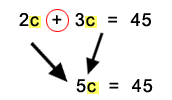 |
|
|||||
| |
|
|
|
|
|
|
| |
|
|
||||
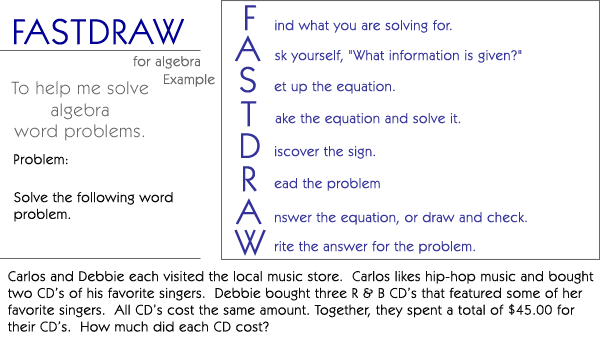
F ind what you are solving for.
-
Look for the question mark.
-
Underline the information that tells you what you are solving for.
-
Name the variable (what you are solving for) with a letter and write it after the question mark.

"I need to read this problem and figure out what I am solving for. First I am going to look for a question mark or a key word that signals what I am solving for. Here is the question mark, and that tells me what I am solving for-the cost of each CD. I'll underline that. Now I need to find the variable (what I don't know) and choose a letter that represents the variable. Well, what I don't know is the cost of each CD. I'm going to pick the letter "c" to name the variable since the variable represents the cost of a CD. I am going to write "c" after the underlined sentence to remind me of the variable."

A sk yourself, "What is the important information?"
- Read each sentence.
- Find the number phrases and circle them.
"Now I need to read through the word/story problem and look for information that will be helpful for figuring out the cost of each CD. I'm going to look for number phrases and circle them. Let me seeŚ 'Carlos and Debbie each visited the local music store.' Nope, no number phrase there. 'Carlos likes hip-hop music and bought two CD's of his favorite singers.' Is there a number phrase in that sentence? - Yep! two CD's. I'm going to circle that. And there is a number phrase in the next sentence also. 'Debbie bought three R & B CD's that featured some of her favorite singers.' There is no number phrase in the next sentence, but I think it's important to know that all the CD's cost the same amount. I'll need to remember that. Finally, there is a number in the last sentence:
![]()

S et up the equation.
- Write the equation with the variables and the numbers in the correct order.
"I've found the important information so I need to write the equation. I'm going to write the circled number phrases from the problem and then put blanks that I can put numbers in."

"I know that I need to put an addition sign in the equation because it says 'Together they spent a total of $45.00 for their CD's"

"Now I need to fill in the numbers. I am going to use c for the cost of the CD's since that is my variable."

T ake the equation and solve it using DRAW.
- If you can't remember it from memory, use "DRAW" to solve it.
D iscover the variable and the operation(s).
- Highlight variables (letters) in 1 color.
- Circle the operation sign.

"There are two variables in this equation. I will highlight the c's. There is one operation sign. It is an addition sign. I am going to circle it."
![]()
R ead the equation.
-
Combine like terms on each side of the equation.
-
Figure out what the left side of the equation equals.
"Now I need to look for and combine like terms. I see two numbers that have the variable c. I am going to add those together. That will make the left side of the equation equal 5c."
"I need to draw the solution to the equation 5c = 45. I don't know what c is, but I do know that I have 5 groups of c, so I am going to draw 5 circles. I know that 5c equals 45, so I am going to draw 45 tally marks. In order to solve the problem, I need to divide 5 into both 5c and 45. Now I have c = 45 / 5. That means I need to take the 45 tally marks and divide them equally among the 5 groups. When I do that, I get 9 tally marks in each circle. I have five groups of nine. That means that nine is the value of c. Each CD was $9.00"
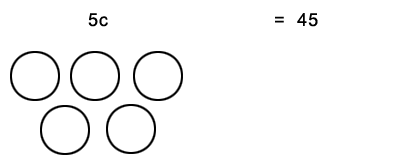
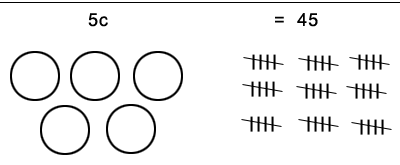
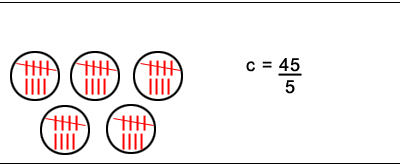

Write
the answer for the variable.
-
Be sure to check the equation.
"Let me check my answer. I have solved the equation and discovered that the value for c is nine, so I will substitute 9 for c in the equation. First I will combine like terms. 2c plus 3c is 5c. Now my equation is 5c =45. I am going to substitute nine for the variable c. That means that 5c is five times nine, or forty-five. I have solved the equation correctly because I have 45 on both sides of the equation The cost of each CD was 9 dollars."

substituting the value 9 for c makes the equation:


| |
|
|
|
|
|
|
|
| |
 |
||||||
|
|
|
||||||
| |
|
||||||
| |
|
|
|
|
|||
| |
|
|
|||||
